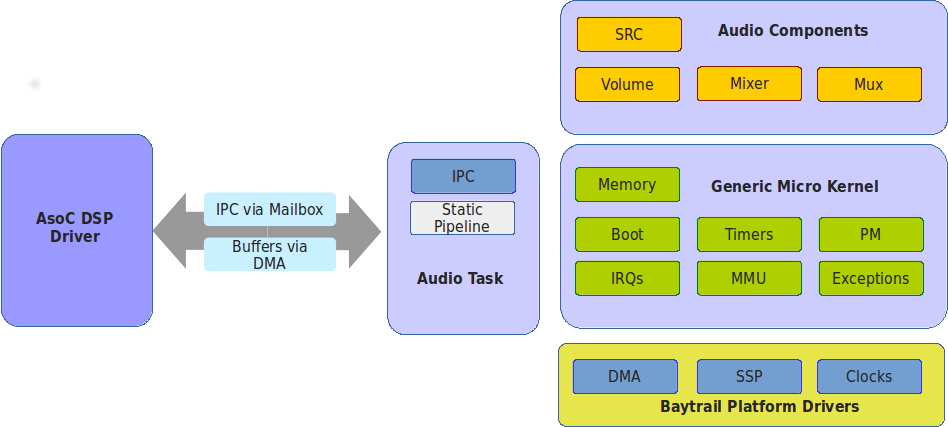The diagram below shows the high level firmware architecture with the Baytrail platform integration. The firmware is split into four main sections :-
- Generic micro kernel. The micro kernel manages and abstracts the DSP hardware for the rest of the system. It also exports C APIs for memory allocation, scheduling work, event notifications and power management.
- Audio components. The audio components can be used to form an audio processing pipeline from host DMA buffer to DSP digital audio interface. Audio components will have a source and sink buffer where they will usually transform or route audio data as part of their processing.
- Audio task. The audio task manages the audio pipelines at run time. i.e. it manages the transportation of data from source to sink component within the pipeline. The pipelines are currently statically defined in the firmware, but infrastructure is now in place to allow the dynamic creation of pipelines from Linux userspace.
- Platform drivers. The platform drivers are used to control any external IP to the DSP IP. This will usually be things like DMA engines or DAI (Digital Audio Interface) controllers. These drivers are used by the audio components and pipelines to send/receive data to/from the host and external codecs.

The left hand side of the diagram shows the Linux kernel ASoC driver and the mailbox/doorbell mechanism for IPC between the host and DSP.


